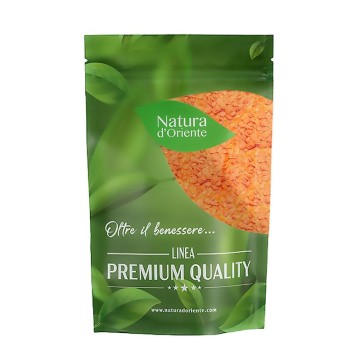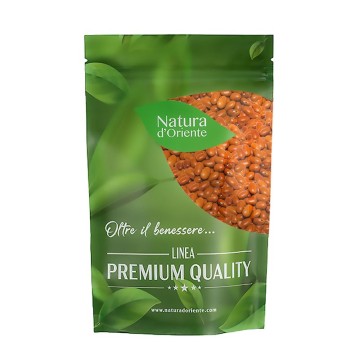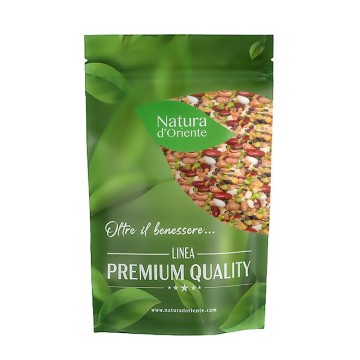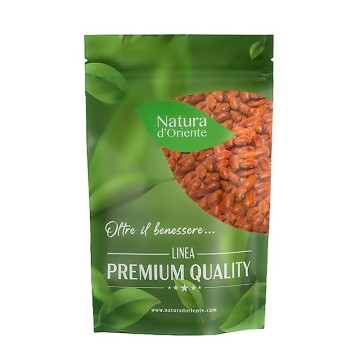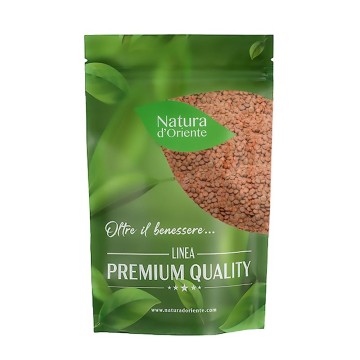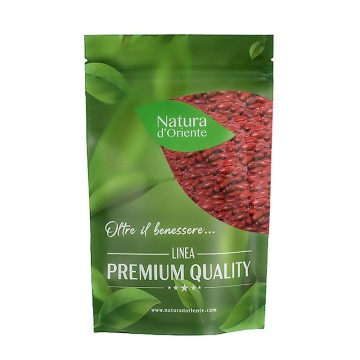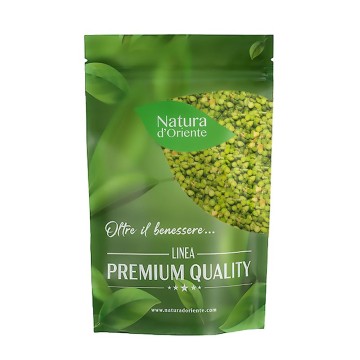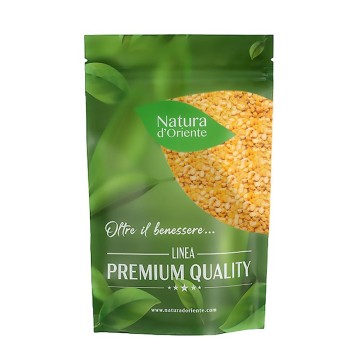The classic variety of lentils with a light green or brown color is the Eston lentil. These are legumes with very small dimensions, therefore easily digestible and ready in a few minutes. In addition, they are famous as high-protein lentils.
Eston lentils: properties and benefits
The green lentils of the Eston variety have a power of their own, in terms of nutrition. This type of legume is rich in proteins, fibers, but also minerals and vitamins.
They are also a good source of potassium, calcium, zinc, iron. For vitamins, they make available niacin, vitamin K, and B vitamins - folate in particular.
Like many legumes, Eston lentils are rich in dietary fiber. The well-being that fiber gives is known both for improving digestion and for its beneficial effects against constipation and to promote intestinal transit.
These legumes are a good option as a health food, also because they help reduce inflammation in the body during digestion. They are also a source of vitamin B3, which helps strengthen the digestive and nervous systems.
On the other hand, dietary fiber is useful for those with conditions such as diabetes, insulin resistance or hypoglycemia. The high fiber content keeps blood sugar levels in balance and can be a continuous source of energy, without reaching the glycemic peaks.
Dietary fiber, in fact, slows down the rate at which sugar is absorbed, ensuring that levels are maintained constantly.
At the protein level, the Eston lentil variety is known to be among the richest in proteins . Therefore, it represents a valid support for the vegetarian and vegan diet, and for all those who want a food with beneficial vegetable proteins.
We know that eating legumes in combination with other proteins such as those of cereals, strengthens the muscle structure. This is because proteins are essential for the repair and proper functioning of the muscles and organs in our body. Eston lentils are able to integrate all the essential acids of the amino group, necessary for the body to function properly. Green lentils can also help in countering high levels of bad cholesterol (LDL) in the blood. Also because they contain a high level of soluble fiber, they are able to favor the expulsion of this substance from the body; they support us in cardiovascular health by keeping arteries clean. Lentils are also a good source of folate and magnesium, which are of great importance for the health of the circulation and the heart. Thanks to the presence of fiber and complex carbohydrates, as well as iron, Eston lentils give us energy. They are an excellent source of iron, which is essential for functions such as carrying oxygen to the body, generating energy and speeding up metabolism.
Iron deficiency is a common cause of fatigue, so green lentils are a good source of fighting it. Foods like green lentils, rich in fiber, by fully activating the digestive system, make you full, and help you eat less.
Origins and History of cultivation
The humble lentil is a legume that for millennia has supported man in nutrition and improved his well-being. Lentils, in fact, are cheap, very nutritious, satiating and, probably, the tastiest of all legumes.
They are thought to have originated in the Near East or in the Mediterranean area, and have been a source of sustenance for our ancestors since prehistoric times. It is the oldest known legume crop, one of the earliest crops. In archaeological excavations on the banks of the Euphrates River dating back to 8,000 BC, remains of lentils have been found; in addition, there is evidence that Egyptians, Romans and Jews ate this legume - it is mentioned several times in the Bible.
It was the Romans who gave these legumes the word lentil, which derives from the Latin lens, and today the shape of the double convex optical lens took its name from the lentil.
For centuries, during the Middle Ages, lentils were a nutritional "refuge" for people struggling with famine. At the same time, they were found as treats for the very rich as a tasty and abundant source of protein.
Today, lentils are a food that holds a prominent place among legumes, and lentils have grown in popularity on many menus. Hundreds of lentil varieties are grown around the world, with over 50 grown as edible.
They come in a variety of colors, with red, brown and green being the most popular - the latter being the best for keeping shape after baking.
Lentils are dried after harvest and can be sold whole or peeled (split in half and peeled).
The Eston type lentil is distinguished from other crops by its slightly speckled or spotted appearance, while sharing the same lens shape and high protein content. Eston is green or brown, but still considerably smaller than average.
Its "birth" is due to Dr. Al Slinkard of the University of Saskatchewan (Canadian university), an agricultural researcher who selected the Eston and Laird varieties.
As one of the most widely grown legumes in various regions and parts of the world, Eston lentils in particular have become an essential food from the Americas to Europe, the Middle East, India and China.
Plant and Fruit
The Lens culinaris or Lens esculenta plant is the one that gives us the edible legume of lentils.
The Lens genus is part of the Faboideae subfamily and the family of flowering plants Fabaceae and Fabales - legume or bean plants.
Lentils grow in the pods of the plant, which contain one or two lentil seeds. Sometimes they can be very small, as is the case with Eston Lentils. On average, they have the shape of small round discs (small lenses), oval or heart-shaped.
The plants are hypogeal, since the seed cotyledons remain in the ground, but with its branches, it reaches a height of about 40-50 cm. The fact that it has an underground part makes it less vulnerable to cold, wind and insect attack. The plant grows best in cool weather, and it is good to sow lentils in the spring. The flowers are small, white, pink, purple or pale blue.
The different varieties of cultivated lentils, in fact, are different from each other in size, color of leaves, flowers and seeds. Eston lentils are part of the green or brown lentils, with very small seeds.
Nutritional values of Eston lentils
These legumes provide various beneficial nutrients. Analyzing 100 grams of Eston lentils, we know that they provide 310 kcal, as well as low fat (1.6%), protein (24.4%), low carbohydrates and fiber (about 30%).
Among the mineral salts are present in Eston lentils, moderate levels of calcium, iron (about 7 mg), potassium and magnesium.
By consuming Eston lentils, you mainly assimilate vitamin C (5 mg), vitamin K, niacin (about 1 mg) and good doses of folate - vitamin B9 (about 100 mcg).
How to consume Eston lentils in the kitchen
These lentils are known for their easy preparation in the kitchen, as they do not need to be soaked.
Their earthy, robust and slightly peppery flavor gives exquisite and satiating dishes. As a variety, Estons also have a slight peppery touch to the palate.
They have a firm texture that holds their shape, perfect for making soups and broths. This type of lentil can cook in about a quarter of an hour, which makes it cheaper to prepare, requiring far less heat and energy than other available sources of protein, such as animal products.
Recipe with Eston lentils: Cream of lentils
Ingredients: 150 g of Eston lentils - - 10 cl of cream - 1 spring onion - 1 clove of garlic - thyme - nutmeg - salt and pepper to taste
Preparation: Put a pot on the heat in which you add the thyme, the chopped onion, the crushed garlic. Add the lentils and a liter of cold water, with the salt.
Cook over medium heat for 20 minutes, stirring often, and checking the consistency of the lentils. Once cooked, remove the aromas and the garlic, and take 3 tablespoons of lentils.
Drain the other lentils and blend them until they are creamy.
Pour the cream into a bowl and mix with the cream, beating with a whisk. Add the whole lentils that you had set aside, then add salt, pepper and a pinch of nutmeg.
Eston lentils: side effects and contraindications
Consuming too many lentils can cause problems like gas and flatulence. Also, in excessive doses there may be side effects of amino acids, including lysine which if consumed in high quantities can cause unwanted conditions such as gallstones and kidney problems.
Lentils can also cause an allergic reaction to some people, particularly if they are also allergic to peanuts. Monitoring the symptoms closely may be sufficient in this case.

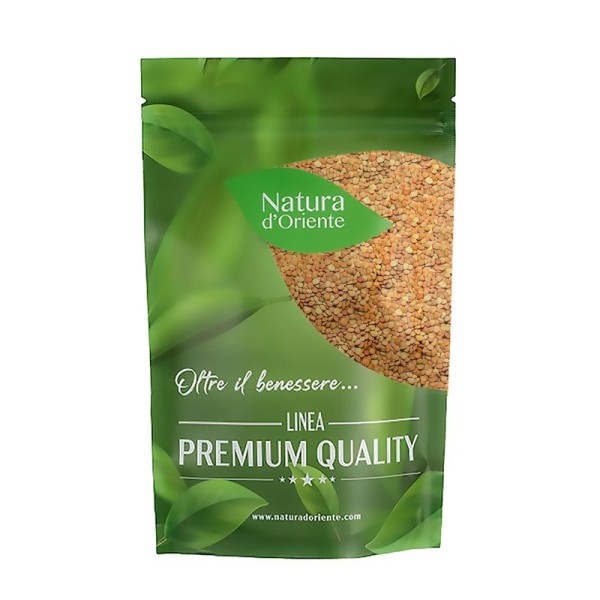







 No reward points for this product.
No reward points for this product.
